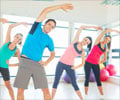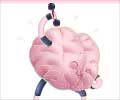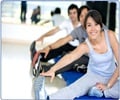Weight bearing exercise during adolescence seems to be the best for maintaining bone strength in older life, indicates a small study published ahead of print in the British Journal of Sports Medicine.
Weight bearing exercise during adolescence seems to be the best for maintaining bone strength in older life, indicates a small study published ahead of print in the British Journal of Sports Medicine.
The research team assessed the impact of exercise between the ages of 12 and 18 on preserving bone strength in later life among 46 women.The women were all aged from 52 to 73, and had already gone through the menopause.
They were grouped according to what type of sporting activities they had done during their physically formative adolescent years.
Eighteen had participated in sports involving high impact (running and jumping) activities, such as tennis, athletics, and volleyball, while 30 had either participated in low impact (swimming) weight bearing exercise or none at all.
Indicators of bone structure (mineral density and content) were assessed in the spine and thigh bone (femur), and the size and geometry of the femur were also measured.
The size, shape, and structure of the bones all reflect bone strength and how well the skeleton compensates for the bone loss that naturally occurs after the menopause.
Advertisement
Their outer femoral bone area was also larger, affording greater resistance to fracture during pressure from movements, such as bending.
Advertisement
Source-BMJ
SK















